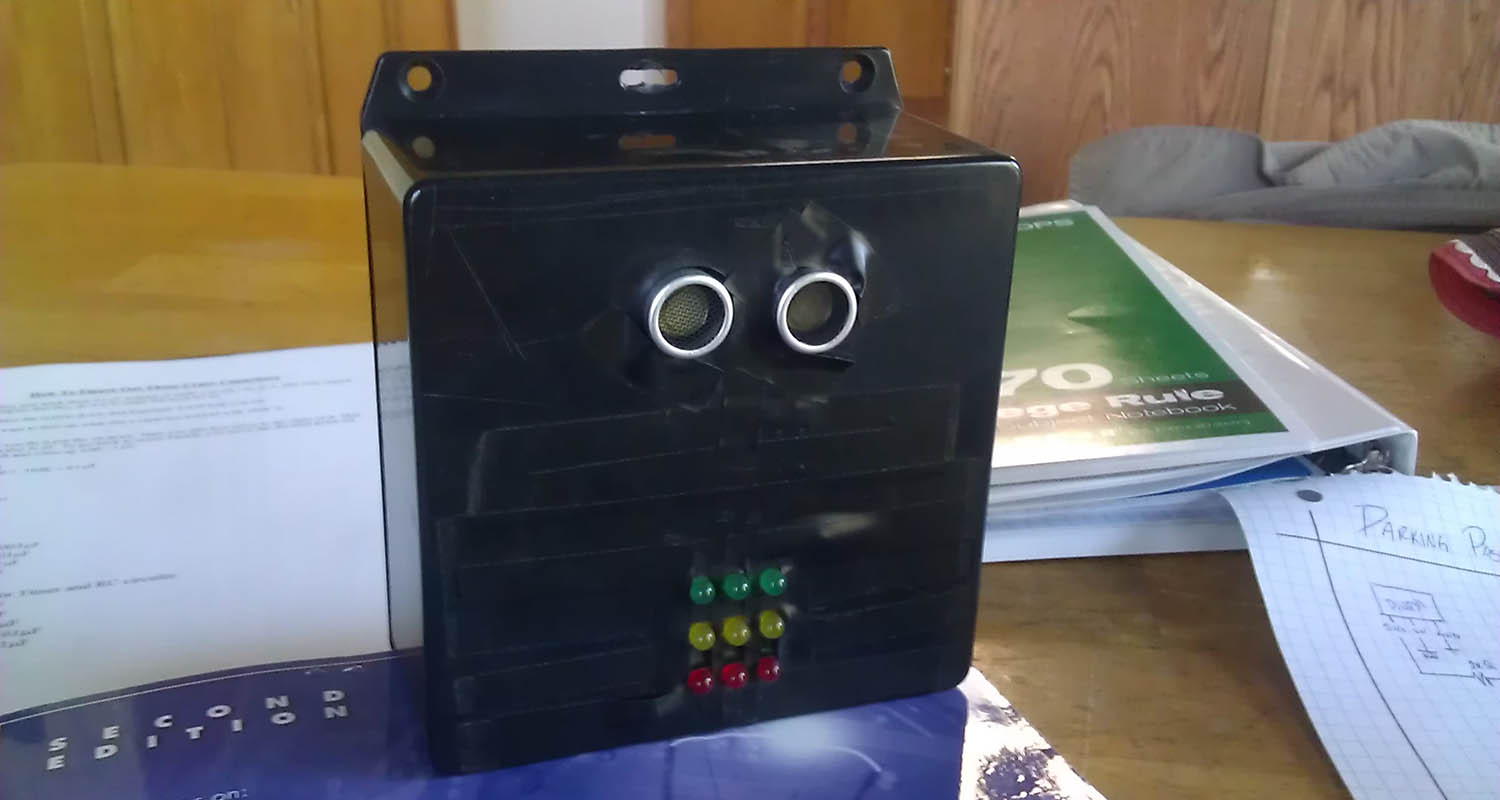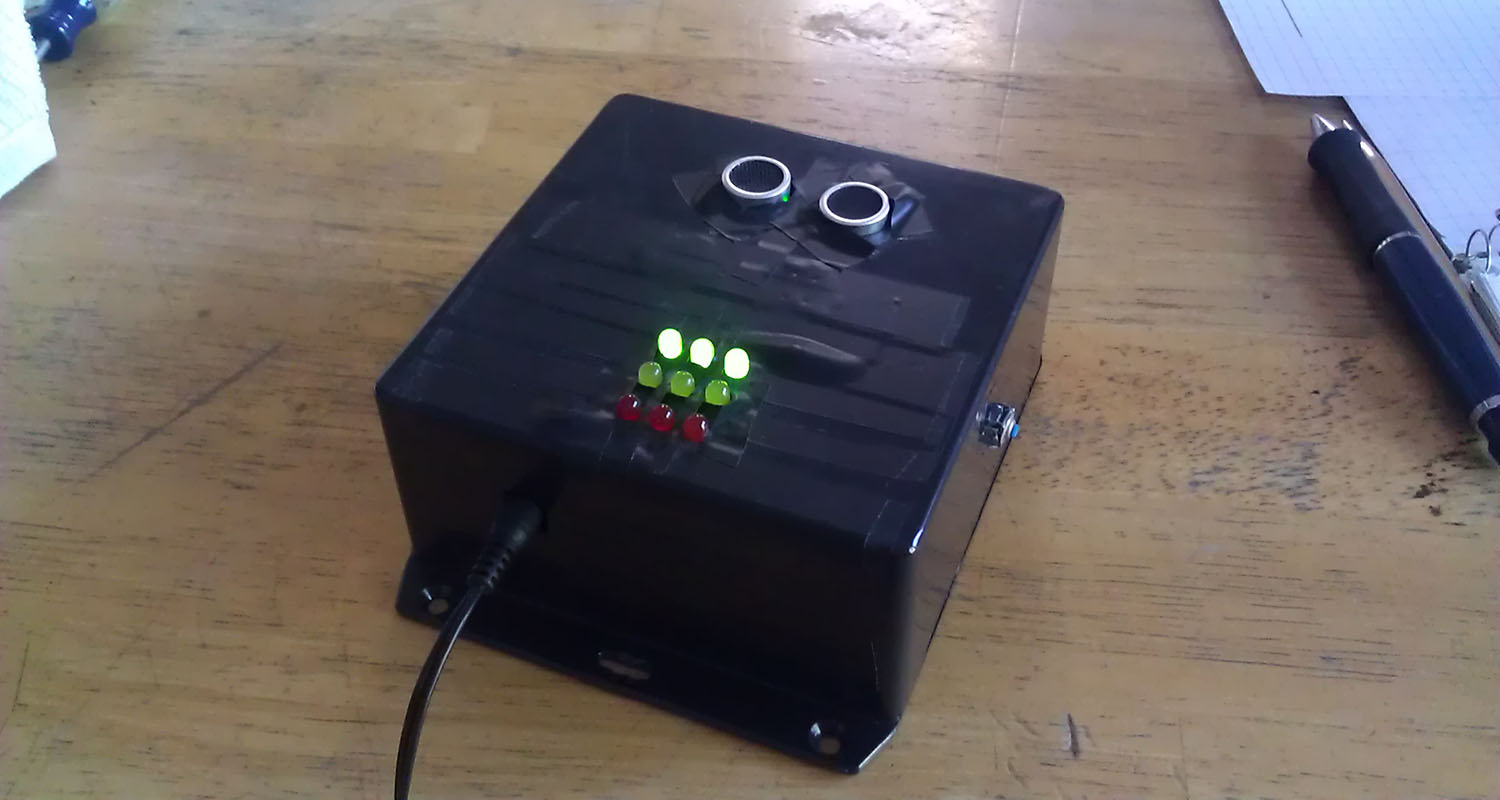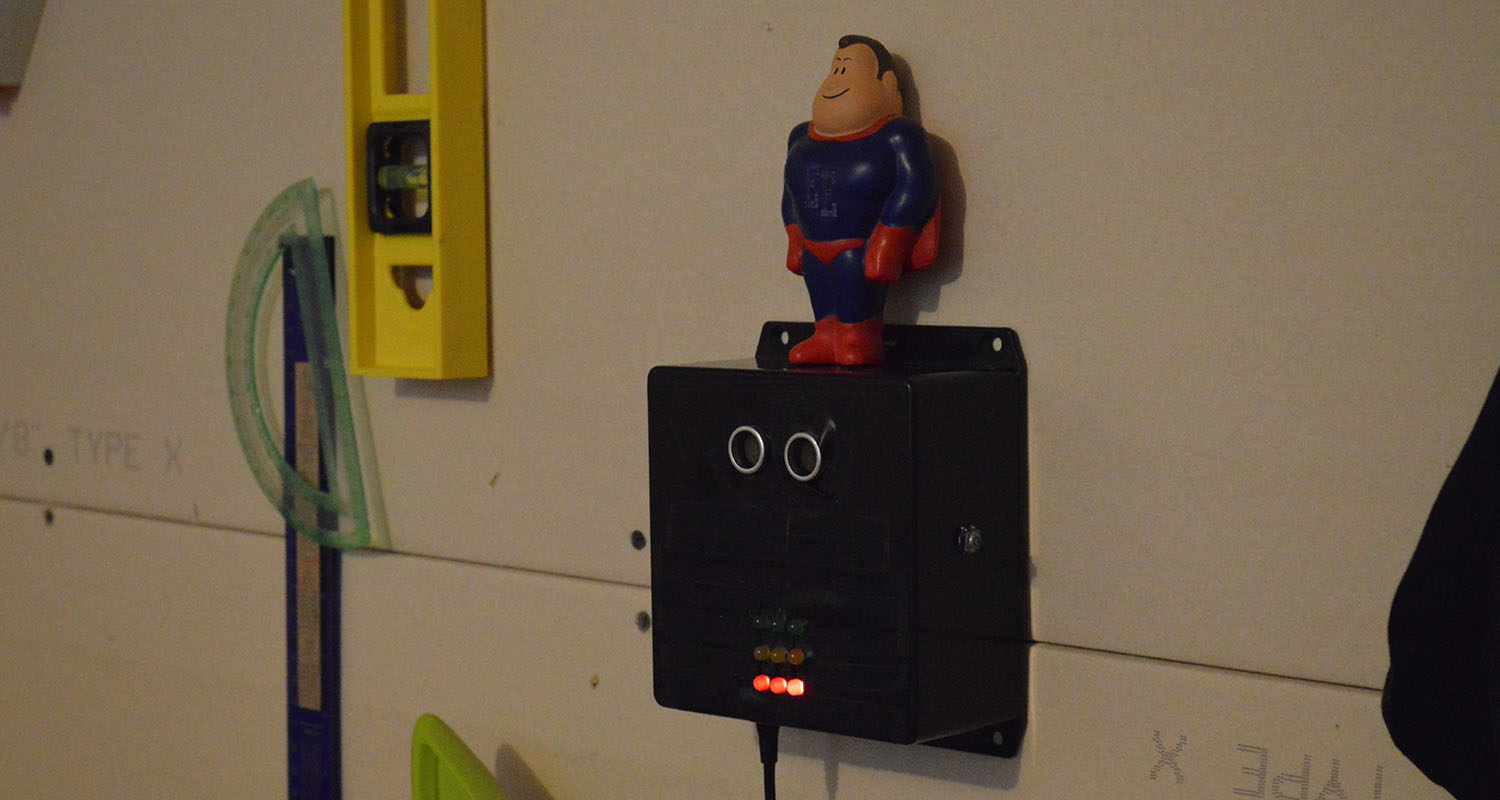Parking Pass
The Parking Pass project started out as a project a buddy of mine re-made for his wife, I think it was more to write an article for Nuts and Volts, but I got the idea from his project. I re-made it first for a roommate I had years later and made a couple changes. I kept everything in a single unit instead of multiple pieces and it worked out great. I did notice the windshield, or a polished new hood could cause a quick false reading, however, it corrected fast and stopped anyone from hitting the back wall again. I think it just gave him a visual while pulling in and calculated the distance when to slow down and be in far enough. At any rate, there is still some ideas on improving the design using multiple sensors or technologies but that seems a little overkill for something people have gotten by using a tennis ball.
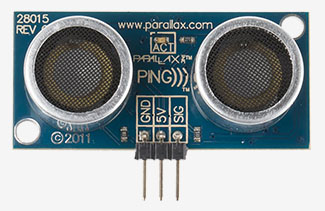

The Parking Pass (as I like to call it) is designed around the Ultra-Sonic Range Finder sensor. Basically, it creates an ultra-sonic chirp with one speaker and listens for a return on the other speaker to detect objects, just like a bat using echo location. The chirp is a specific frequency, so it's easy to listen for through background sounds of the environment. There is an interesting thing about working with sound waves, which is just pressure waves traveling through air; sound can be deflected by smooth objects, absorbed by squishy objects, and travels at different speeds depending on the environment. For example, if it’s hot outside, sound travels faster than when it’s cold. This is especially important to consider if you live in an area that has extremes at both ends of the spectrum during seasons like summer and winter. For my project this round, weather didn’t play such of a critical part because it’s being used in an insulated garage. However, if I was going to use it in an outside garage or car port and needed the extra resolution from the sensor, I would add a temperature and humidity sensor to calculate the offset for environmental conditions.
The Parking Pass used the recognizable color scheme of red, yellow and green to determine 4 zones, each zone had a set of LEDs that correlated with each zone. Zone 3 uses green and is the furthest away, Zone 2 uses yellow and is to indicate drive slower (opposite of how many drive at a stop light), Zone 1 uses red and is a determined distance to stop and park, Zone 0 uses flashing red to indicate the driver has pulled in too far. Once I installed the Parking Pass, it was easy to tell if the vehicle was in the correct position. This allowed the driver to get in and out safely and ensured the vehicle was far enough that the garage door didn’t hit it, which was nice because truck and SUV bumpers are regularly higher than the standard IR beam that auto garage doors use to determine if anything is in the way.
The Ultra-Sonic Range Finder could be used with any microcontroller like the BASIC Stamp, Propeller, Arduino, or similar 5V compatible device. I used a Propeller, with a set of 3 LEDs for each zone because I had multiple of those colors already left over from other projects. The case was one I had left over as well. If someone really wanted to go all out, they could use a couple relays or MOSFETs to control an actual stop light. I was working with a single car garage with storage already installed, so space was a commodity, meaning smaller was better as long as it could be easily seen by the driver.
I had a client reach out to me once I left Parallax and asked me to build him a commercial design for a large parking complex. I designed it to mount on ceiling of the parking garage that would monitor for the top of a vehicle, and then communicate back to the guard shack to inform the attendant which spots were taken, and which were open. This garage is in Forrest City, Texas and they designate parking spots for arriving guests to eliminate the hassle of finding an open spot in the large garage.
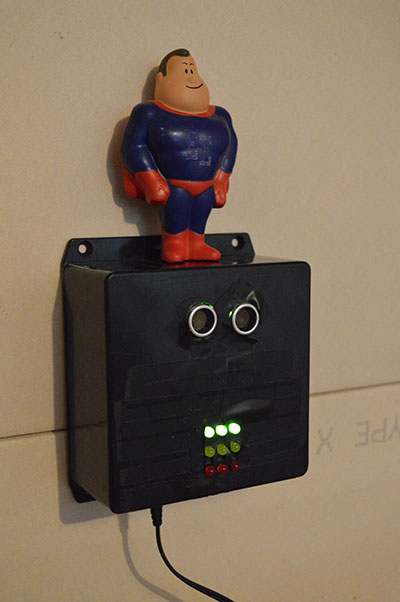
Difficulty:
I give this project 2 stars because this project has been made and re-made plenty of times using different methods, like IR, Laser, and PING sensors. This isn't a difficult project to complete but can be useful for anyone who is parking challenged.
 JD Presents | Development In Reach
JD Presents | Development In Reach
